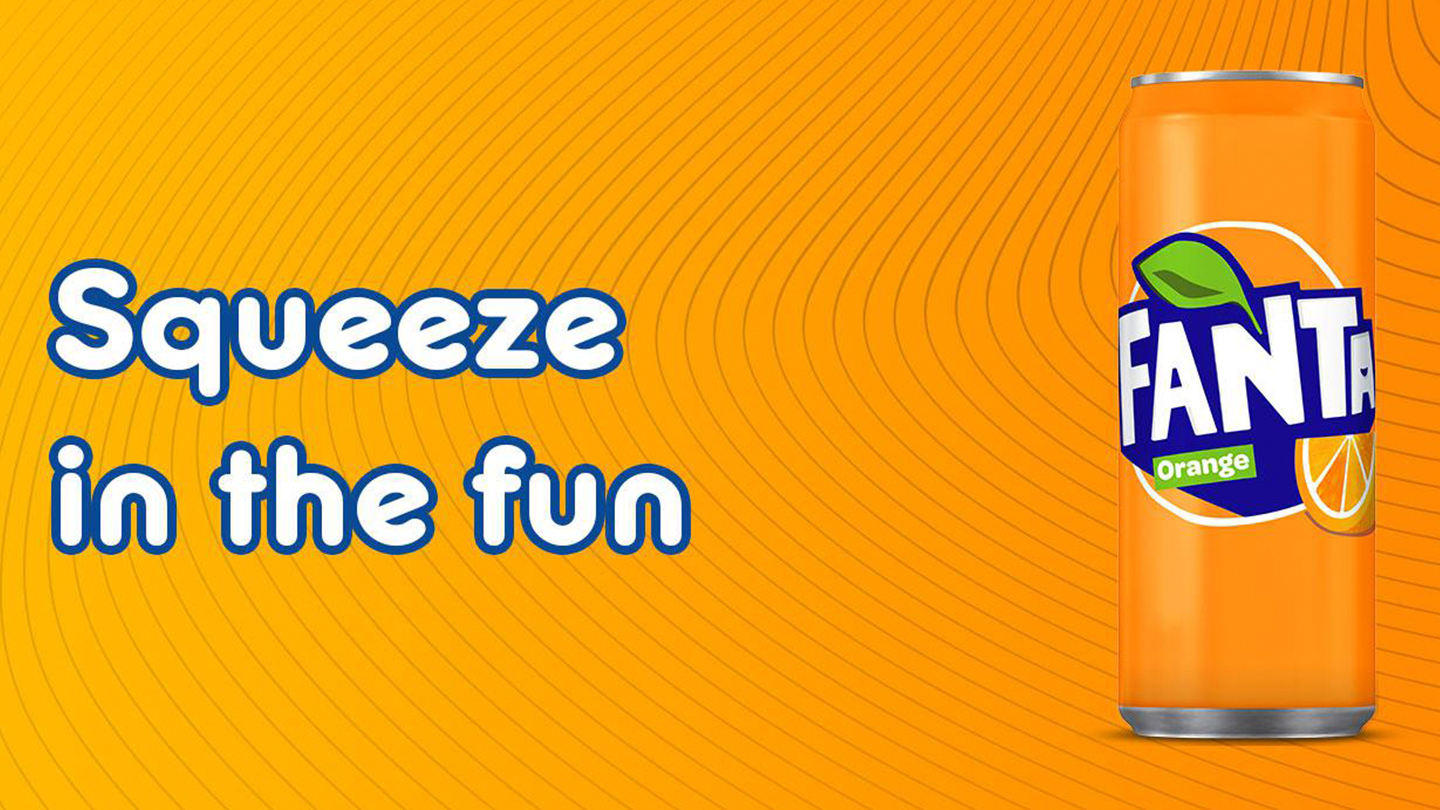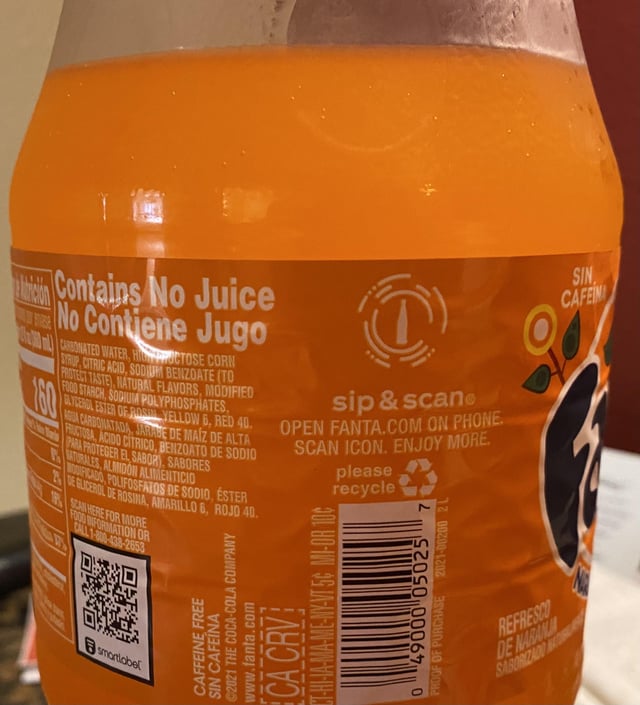
Introduction
Overview Of Fanta And Its Popularity
Fanta, a product of The Coca-Cola Company, is a popular carbonated soft drink known for its vibrant orange flavor. It has gained widespread popularity among consumers of all ages. The refreshing taste and bright orange color make it a favorite choice for many individuals, especially during hot summer days or as a pick-me-up beverage. Fanta’s availability in various countries worldwide has contributed to its global recognition and appeal.
Common Questions About Fanta’s Ingredients
Many consumers often inquire about the ingredients used in Fanta to ensure they align with their dietary preferences and restrictions. The primary ingredients listed on Fanta’s packaging include carbonated water, sugar, citric acid as an acidifier, natural orange flavors, potassium sorbate as a preservative, Vitamin C, and the color Sunset Yellow. Some individuals may have concerns about the sugar content in Fanta due to health considerations related to excessive sugar consumption. Additionally, questions may arise regarding the use of artificial colors or preservatives in the beverage. Understanding the ingredients in Fanta can provide consumers with valuable information to make informed choices about their beverage consumption.
Fanta Ingredients
Unveiling Fanta’s Ingredient List
Fanta, a popular carbonated soft drink from The Coca-Cola Company, contains ingredients such as carbonated water, high fructose corn syrup, natural flavors, citric acid, sodium benzoate (as a taste preservative), and Red 40. The beverage also boasts of 100% natural flavors, contributing to its distinct taste profile.
Understanding The Components Of Fanta
Consumers often seek clarity on Fanta’s ingredients to make informed choices about their consumption. With ingredients like sodium benzoate, natural flavors, and artificial colorings like Yellow 6 and Red 40, individuals may have concerns about certain components in the drink. It’s essential to be aware of these ingredients to align with dietary preferences and restrictions.
Caffeine Content In Fanta
Clarifying Whether Fanta Is Caffeine-free
Fanta is proudly marked as a caffeine-free soft drink, with 0 mg of caffeine per 12 fl oz. This aspect makes it a suitable choice for individuals looking to avoid caffeine in their beverages.
Exploring The Caffeine Levels In Fanta
Consumers can enjoy Fanta without concerns about caffeine content, as the drink is entirely free of this stimulant. This makes Fanta a refreshing option for those who prefer non-caffeinated beverages.

Impact Of Ingredients
Discussing The Impact Of High Fructose Corn Syruphigh Fructose Corn Syrup Is A Commonly Used Sweetener In Many Beverages, Including Fanta. Its High Sugar Content Can Contribute To Excessive Calorie Intake, Potentially Leading To Weight Gain And Other Health Issues If Consumed In Large Amounts.
Analyzing The Effects Of Artificial Colorsartificial Colors Are Often Added To Enhance The Visual Appeal Of Drinks Like Fanta. However, Some Artificial Colors Have Been Linked To Adverse Health Effects, Including Hyperactivity In Children And Allergic Reactions In Some Individuals. It Is Essential For Consumers To Be Aware Of The Potential Risks Associated With These Additives And To Make Informed Choices About Their Beverage Consumption.
Health Concerns
Addressing Potential Health Concerns Of Fanta
When considering the impact of high fructose corn syrup found in Fanta Orange Caffeine Free Soda Orange, it is essential to note that this sweetener’s high sugar content can contribute to excessive calorie intake, which may potentially lead to weight gain and other health issues if consumed in large quantities.
Examining the effects of artificial colors present in Fanta, it’s worth noting that these additives are often utilized to enhance the visual appeal of the beverage. However, certain artificial colors have been associated with adverse health effects, such as hyperactivity in children and allergic reactions in some individuals. Consumers should remain informed about the risks linked to these additives when making choices regarding their beverage consumption.
Examining The Use Of Sodium Benzoate In Fanta
Sodium benzoate is a common preservative used in beverages like Fanta. While it aids in extending the product’s shelf life, there are concerns about its potential health effects. Some studies have suggested that sodium benzoate may react with ascorbic acid (vitamin C) in beverages, forming benzene, a known carcinogen. Monitoring the levels of preservatives like sodium benzoate in beverages is important for consumer safety.
Fanta Flavors
Exploring The Variety Of Natural Flavors In Fanta
Introduced with the aim of challenging taste perceptions, Caffeine-Free Fanta Orange stands out as the first member of the Fanta lineup to feature 100% natural flavors. The incorporation of natural flavors brings a refreshing twist to the classic Fanta taste, catering to those seeking a more wholesome beverage option. The addition of natural flavors not only enhances the sensory experience but also aligns with the growing demand for cleaner ingredient profiles in beverages.
Highlighting The Differences In Fanta Flavors
Comparing the traditional Fanta Orange with the newer Caffeine-Free Fanta Orange reveals notable differences in their ingredient compositions. The absence of caffeine in the latter appeals to individuals looking to limit their caffeine intake while still enjoying a vibrant Fanta flavor. Additionally, the shift towards natural flavors in the Caffeine-Free variant indicates a strategic move by Fanta to offer a more natural and health-conscious product to its consumers.

Controversies Surrounding Fanta
Investigating The Controversies Related To Fanta’s Ingredients
In recent times, a hot topic of conversation revolved around the disparity in ingredients used in Fanta beverages domestically and internationally. The revelation that the British version of Fanta contains 3.7% orange juice concentrate, 1.3% citrus juice concentrate, and extracts from carrots and squash for flavor, sparked debates about potential double standards in beverage manufacturing. On the other hand, the domestic version of Fanta seemingly comprises water, fructose syrup, and sweetener, making the contrast in ingredients quite striking.
Debunking Myths About Fanta
Addressing the misconceptions surrounding Fanta, it’s crucial to understand that the brand’s approach to product formulation varies across regions. While the British variant boasts natural ingredients like fruit concentrates and vegetable extracts, the domestic version opts for a simpler recipe. This distinction doesn’t necessarily indicate a double standard but rather reflects the brand’s strategy to appeal to diverse consumer preferences and regulatory requirements in different markets. By offering varied formulations, Fanta can cater to a spectrum of tastes and nutritional expectations among its global audience.
Conclusion
Summarizing The Key Points About Fanta And Its Ingredients
Recent discussions centered around the ingredients in Fanta raise questions about the differences between the British and domestic formulations. While the British version contains natural fruit and vegetable extracts, the domestic variant opts for a simpler recipe with fructose syrup and sweetener. These variations highlight Fanta’s adaptable approach to cater to diverse consumer preferences and regional regulations.
Final Thoughts On Fanta’s Caffeine Content
Addressing concerns about caffeine in Fanta, it is essential to note that Fanta is a caffeine-free carbonated soft drink made from natural flavors and fruit juice. Despite being a popular choice among consumers, especially those seeking a caffeine-free option, Fanta’s formulation prioritizes natural ingredients rather than caffeine additives. This distinction sets Fanta apart in the soda market for individuals looking for a refreshing beverage without the stimulation of caffeine.
Additional Resources
Links To More Information About Fanta And Its Ingredients
When delving deeper into the world of Fanta and its ingredients, one can explore the specific formulations utilized in different regions, such as the distinction between the British version comprising natural extracts versus the domestic option with fructose syrup. Understanding these variations sheds light on Fanta’s dynamic strategy to align with varying consumer demands and regulatory requirements.
Further Reading On Fanta’s Nutritional Facts
For those interested in a comprehensive analysis of Fanta’s nutritional profile, exploring the nutrition facts and ingredient breakdown can provide valuable insights. By considering factors such as calorie density, sugar content, and the presence of beneficial elements like fiber and protein, individuals can make informed choices regarding their beverage consumption and dietary preferences.
FAQ About Fanta’s Ingredients
Q: Is Fanta Caffeine Free?
A: Yes, Fanta is caffeine-free.
Q: What are the primary ingredients in Fanta?
A: The primary ingredients in Fanta include carbonated water, high fructose corn syrup, natural flavors, citric acid, preservatives, and food coloring.
Q: Does Fanta contain any artificial sweeteners?
A: No, Fanta does not contain artificial sweeteners. It is primarily sweetened with high fructose corn syrup.
Q: Are there any allergens present in Fanta’s ingredients?
A: Fanta may contain allergens such as corn and food coloring. It’s essential to check the label for specific allergen information.
Q: What natural flavors are used in Fanta?
A: Fanta uses a blend of natural fruit flavors to create its unique taste, such as orange, grape, pineapple, and more.
Q: Is Fanta suitable for vegetarians and vegans?
A: Yes, Fanta is suitable for both vegetarians and vegans as it does not contain any animal-derived ingredients.

At Deep Woods Distillery, we try to put an essence of the Great Oregon Forest in each bottle of hand-crafted liquor we make. All of our spirits are made from scratch in Oakridge, Oregon, from select ingredients.